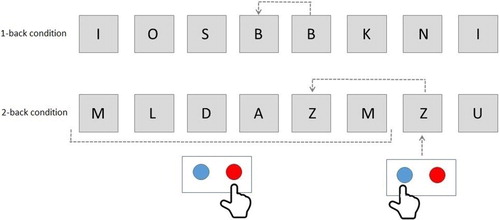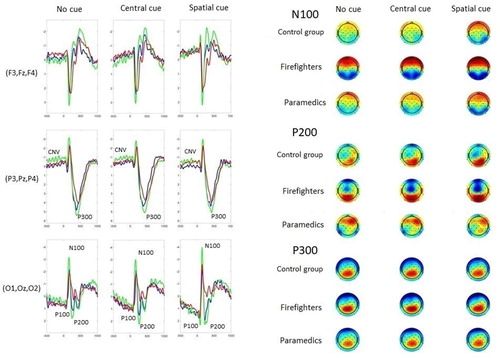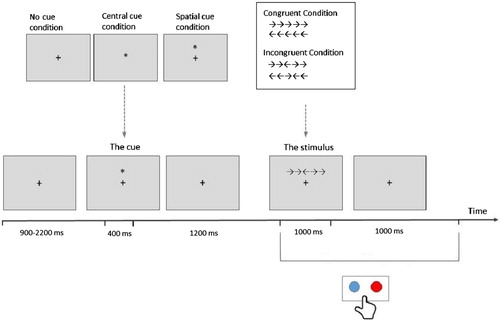Figures & data
Figure 2. N-back task pattern. Note: Left button, matched stimuli; right button, non-matched stimuli.

Table 1. Reaction time to a matched and non-matched stimulus in the N-back task.
Table 2. Reaction time and answer correctness for all conditions of the ANT.
Figure 3. Evoked potentials in the attention network test to proper stimuli presented in all conditions during recording on the day off in the evening. Note: The full colour version of this figure is available online. CNV = contingent negative variation. Red, paramedics; green, firefighters; blue, control group.



